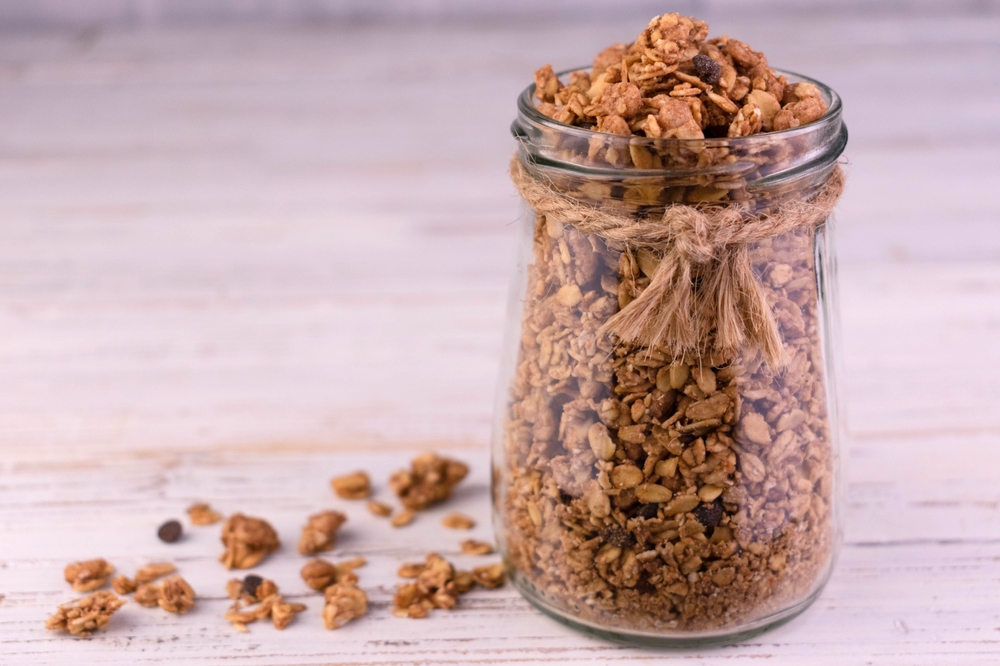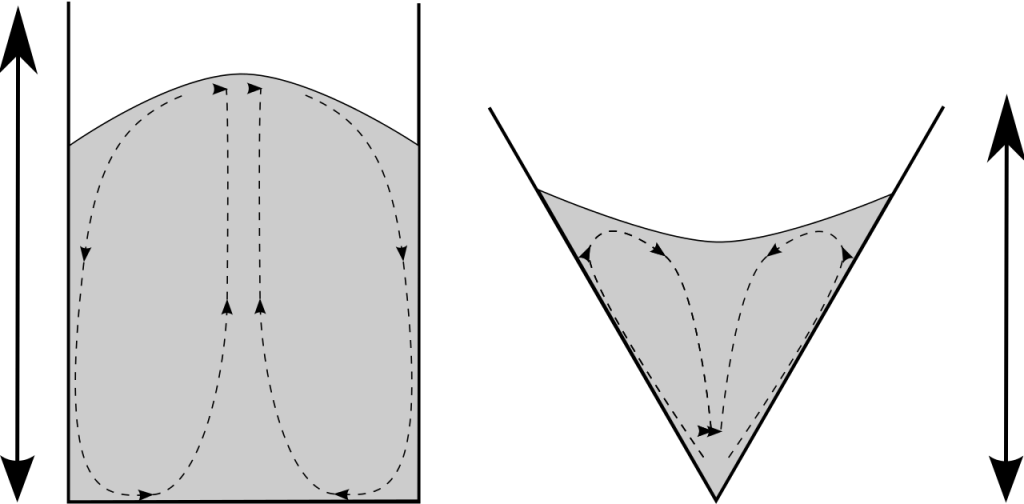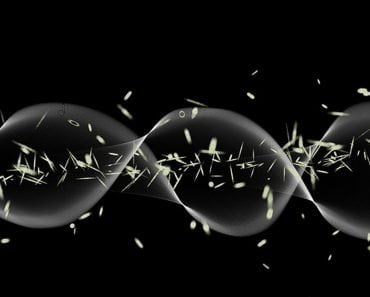Table of Contents (click to expand)
The Brazil Nut Effect, or Size-Dependent Segregation of Vibrating Granular Matter, occurs as a result of granular convection and percolation.
Have you noticed that your jar of ‘Mixed Nuts’ isn’t always so ‘mixed’?
For instance, in a can of trail mix, you will always find bigger nuts like Brazil nuts or almonds at the top, while the smaller ones like peanuts or flax seeds regularly end up at the bottom.
If you try shaking up the jar to mix them more evenly, things get even worse. Upon shaking, you will see even more Brazil nuts rising to the top… but why does this happen?

Recommended Video for you:
The Brazil Nut Effect
Thanks to the ascending Brazil nuts, this phenomenon of particle segregation is commonly known as the “The Brazil Nut Effect”.
This effect is not only constrained to Brazil nuts. From cereal boxes to chip packets, we can see the Brazil Nut Effect in action all over differently-sized items.

This effect seems to contradict our logical belief that larger and heavier objects sink to the bottom of a given space.
What really causes the Brazil Nut Effect?
Why Do Larger Chunks Rise To The Top?
What’s special about mixtures like muesli or cereals?
- One, all of these mixtures fall under the category of granular materials.
- Two, they all undergo intense shaking and jostling when transported.
The Brazil Nut Effect usually occurs when granular materials experience an acceleration that is greater than their acceleration due to gravity.
In simpler words, the particles must undergo vigorous shaking to overcome gravity and bounce around.
This happens all the time as packages travel around the world through bumpy rides, grocery carts, and backpack travels.
Once the particles start bouncing around, several mechanisms come into play to “sort them out”. Let’s discuss the most important mechanisms that affect this phenomenon.
Granular Convection
When shaken vigorously, something called convection currents develop within a granular material.
Convection is the process where the rising of hot fluids and the sinking of cold fluids result in a loop of fluid motion.

But how does granular matter demonstrate such a behavior?
Well, granular materials are weird. Even though individual granules are basically solids; in bulk, these materials exhibit properties of liquids and gases.

When we shake granular materials, the grains closer to the walls of the container experience more friction than those at the center. As a result, the particles closer to the walls are pushed down, whereas those at the center rise up. This constant motion slowly results in the formation of granular convection loops.

What is noteworthy about these convection currents is that the ascendant, center channels are broad, whereas the downward side channels are narrow (source). Hence, the larger particles can rise up easily through the wide upward channels, but they find it difficult to glide back down through the constricted side channels. As a result, the larger particles get stuck on the surface. As the shaking continues, more and more of the larger grains turn up at the top of the mixture.
Thus, just as hot air rises and cold air sinks in regular convection; larger granules rise and smaller ones sink in granular convection.
Percolation
Another prominent mechanism involved in the Brazil nut effect is granular percolation.
This mechanism is fairly simple. When the particles jostle around, the smaller particles occupy the gaps created by the larger ones and, in turn, push the larger ones up. This process continues over time, so the bigger granules gradually reach the surface.

This effect is predominant when the friction caused by the container walls is not strong enough to induce convection currents.
Can We Reverse The Brazil Nut Effect?
We have all tried reversing the Brazil nut effect at some point in our lives, perhaps by experimenting with vigorous shaking, flipping, and whatnot, but reversing this effect is not that easy.
Granular segregation, in reality, is a super-complex phenomenon with many factors working behind it.
The arrangement of granular particles depends on the particle size, particle shape, friction, density, the shape of the container, container walls, and strength of vibration, just to name a few.
Manipulating some of these factors can help us in reversing the sorting pattern, but a full reset is almost impossible without some major changes.
For example, changing the shape of the container from cylindrical to conical can reverse the Brazil nut effect. If you shake the nut mix in a cone-shaped container, you will observe that the larger nuts settle at the bottom whereas the smaller ones rise to the top. This is because the direction of convection currents is reversed in a conical dish.

In A Nutshell
Thus, the Brazil Nut Effect is the reason why you fail to mix up your snacks evenly, no matter how hard you shake them. It is the reason why popcorn kernels end up at the bottom of the container.
It is also the reason why larger rocks settle on the surface of riverbeds and why asteroids look the way they do…
…but more about that later.
For now, just keep in mind that when you shake a pack of nuts or muesli in the hopes of ‘mixing’ it, you are, in fact, achieving the exact opposite outcome.
References (click to expand)
- (2005) The Brazil Nut and Reverse Brazil Nut Effects. The University of Illinois Urbana-Champaign
- Wibowo, H. A. C., Ain, T. N., Nugraha, Y. P., Aji, D. P. P., Khotimah, S. N., & Viridi, S. (2016, August). Experimental study of granular convection in (real) two- dimension Brazil-nut effect. Journal of Physics: Conference Series. IOP Publishing.
- Kudrolli, A. (2004, February 2). Size separation in vibrated granular matter. Reports on Progress in Physics. IOP Publishing.
- Knight, J. B., Ehrichs, E. E., Kuperman, V. Y., Flint, J. K., Jaeger, H. M., & Nagel, S. R. (1996, November 1). Experimental study of granular convection. Physical Review E. American Physical Society (APS).












